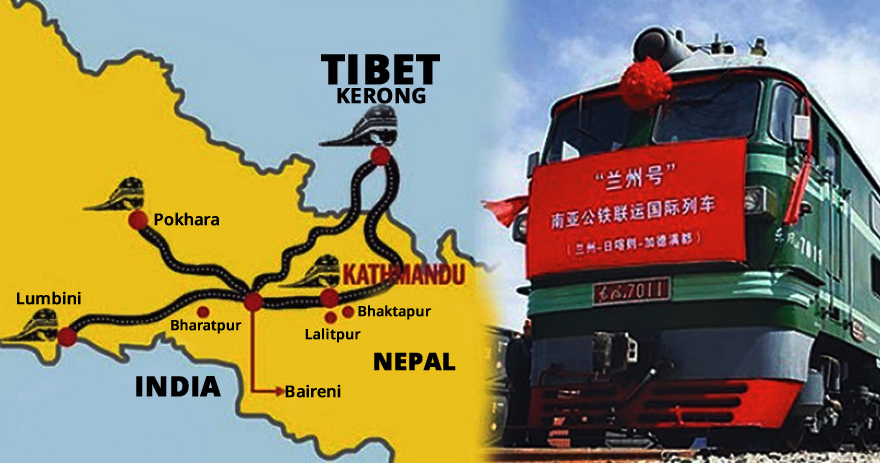
(TibetanReview.net, Jan25’20) – Nepal has ruled, following pre-feasibility studies carried out by it, that a railway line connecting it with China through Tibet is feasible, reported sputniknews.com Jan 24, citing the country’s Foreign Minister Pradeep Gyawali.
“Pre-feasibility studies for the trans-Himalayan railway have shown that it is feasible. Now we will do a feasibility report and then work towards implementing it,” the report quoted Gyawali as saying while briefing media about “Sambaad Sagarmatha”.
Sagarmatha Sambaad is Nepal’s a multi-stakeholder dialogue forum committed to deliberate on the most prominent issues of global, regional and national significance.
The report said the consensus between the two countries was that China will carry out all the technical works such as aerial mapping, surveying, and geological testing while Nepal will conduct Environmental Impact Assessments and prepare resettlement plans for the people to be affected by the proposed railway project.
The plan is for China to lay a cross border railway network from Tibet’s capital Lhasa to Rasuwa in Nepal. The network will further connect to the Nepal’s capital Kathmandu. Lumbini, the birthplace of the Buddha and located just 29 km from the Indian border, will also be the part of this connectivity project.
Last year China officially included the Nepal-China Trans-Himalayan Multidimensional Connectivity Network in its joint communiqué at the second Belt and Road Forum in Beijing.
Later, during his visit to Nepal in October, Chinese President Xi Jinping signed a preliminary contract related to the highly ambitious project.
The project is deemed to be highly challenging both geographically and financially. It is not clear yet who will bear the cost of the project in what shares, although Nepal has been looking to China to provide the bulk of it as grant as the country’s is seen as likely to fall into a debt trap otherwise. Nepal will still have to ponder cost China may exact in return for a “grant”.




